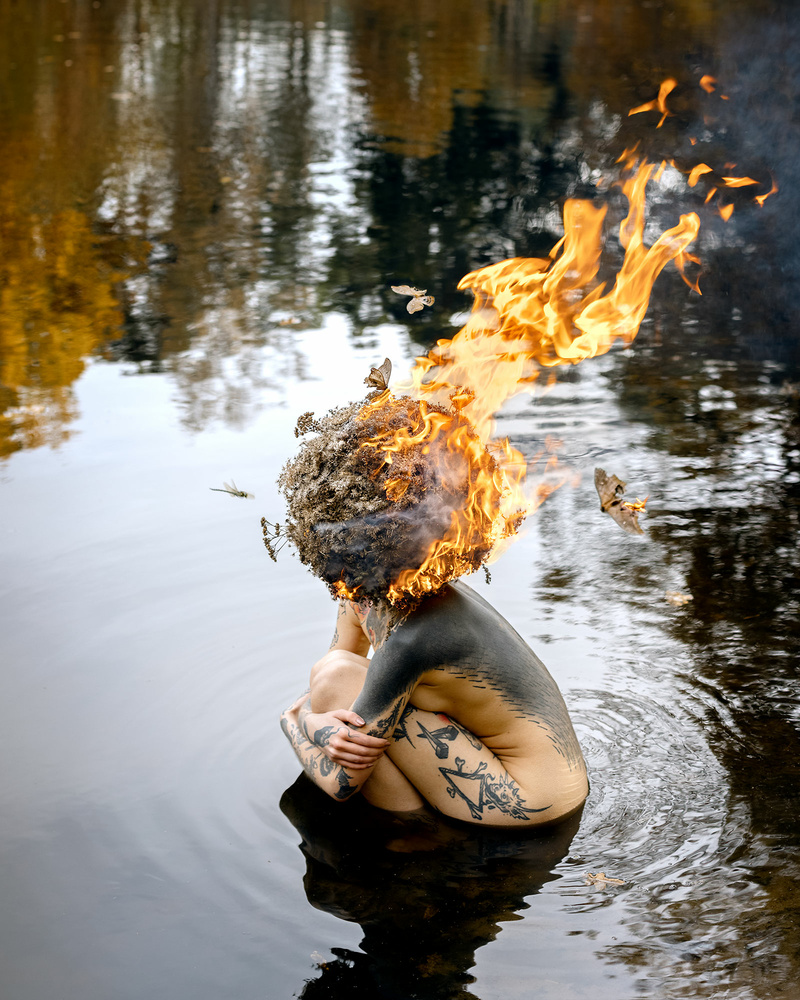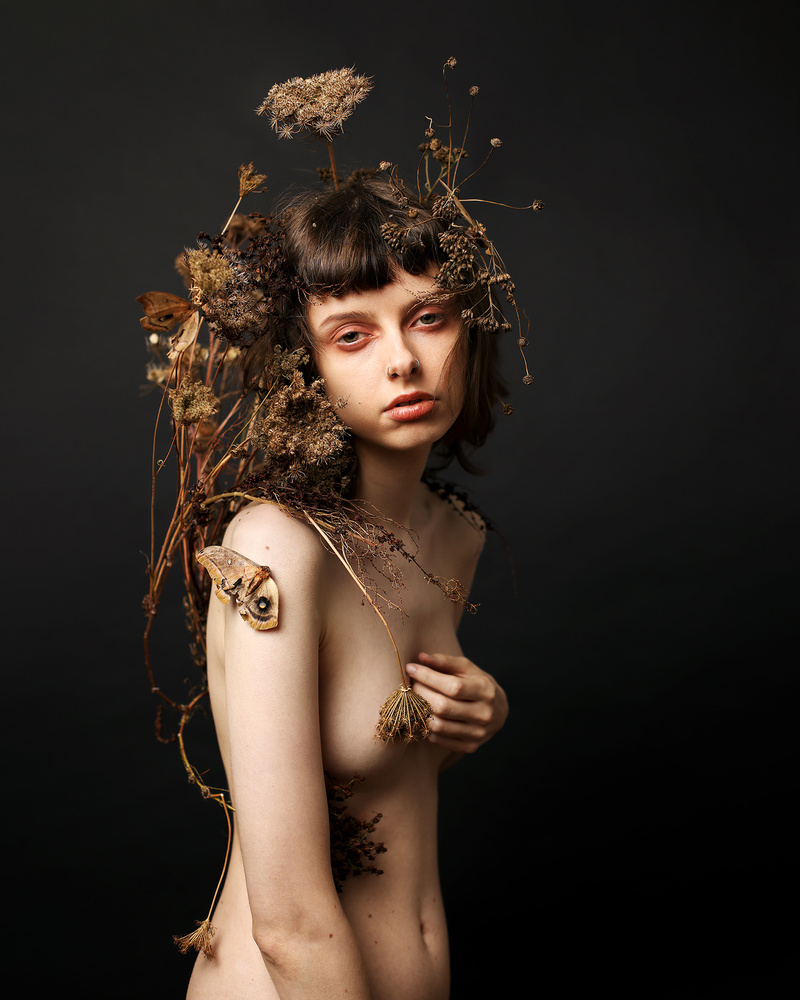As photographers, we often find ourselves at exciting places such as concerts, parties, and sporting events. Many photographers spend hours of their day working with other people. It is common to see photographers interacting with people and asking the people they are photographing to move a bit to the left or to position their hands differently. On the surface, it might seem that photographers are extroverts who love being out and about.
Many photographers consider themselves introverts and the camera serves as their buffer between themselves and other humans. The camera isn’t so much a conduit to facilitate human connection as it is a shield for the photographer to hide behind. But the camera can also help us make connections to others through the photographs we produce. Even a documentary photographer who shoots candids on the street reveals something of themself through the subjects they choose to photograph. When they shoot in the subway, do they photograph the homeless person down on his luck, or do they take photographs of the little girl sitting in her father’s lap, smiling as she looks out of the subway car window? This choice reveals more about the photographer than the subway system.

Fine art photography may be categorized under the umbrella of "fine art," which can be defined as visual art appreciated for its imaginative, aesthetic, or intellectual content. However, fine art photography could be further divided into two categories. Firstly, as a tool for commercial photographers to create personal work, that allows them the freedom to create without consulting a creative brief written by someone other than themself. Secondly, it could be viewed as a fine art medium, where work created without client input, is created for purchase and subsequent collection by art buyers. No matter the approach the photographer pursues, they must be willing to dive deep into their own emotions — both positive and negative in the creation of their art.

I spoke with Frankfurt, Germany-based fine art photographer, Leigh Schneider, to gain insight into how she navigates this genre. “I’m a conceptual fine art photographer and work as an artist, in the medium of photography. I shoot dark symbolic work, that contains hopeful messaging.”
Like many forms of photography, fine art photography has elements of self-expression, in that the photographer has an opportunity to send a message into the world through their work. Without constraints placed upon the photographer by a commercial client, the photographer is free to choose what is captured and the story told by those images. A fine art photographer may appear inwardly focused and the expression of the photographer’s own experience. However, if we look closer, we might find that there is a deeper meaning to the body of work. Leigh notes: “What if our freedom of artistic expression is combined with a cause? What if we use our skills and passions to reach outward, into the world? Then we could create work with a purpose outside of ourselves."


Many fine art photographers create individual images that are linked together to form a series with an underlying theme or message. For Leigh, one of these projects has taken the form of a series of images titled, "Beyond the Shadows." These images are linked through their exploration of various aspects of mental health.
I worked for a while as a mental health support worker and experienced firsthand the impacts mental illness and connected topics can have. For this series, I wanted to address subjects that connect to mental health, with the intention of communicating a hopeful message in each piece.
There is no set formula for creating fine art imagery. However, Leigh offers this suggestion. “Identify a topic that is close to your heart and think about what you'd like to say about it. Then you can begin to connect the message to your visual style. I often begin by writing notes any time I have a particular thought that I think might be connected to a future concept. I'll refer back to those notes when I'm concepting and start thinking about possible visual elements and symbolism that could communicate that idea. I’ll then draw sketches of the elements, poses, and setup,” said Leigh.
Fine art photography can encompass a wide variety of styles. It can be anything from clean black-and-white portraits to quirky, off-the-wall art in which the subject is not discernible. “One way to think of it is that fine art photography as an art medium, is connected with artistic expression, rather than a commercial product or subject. You've got creative control and get to determine what you want to say something about and how you want to do that — where photography as a commercial tool is aimed at fulfilling a client's needs,” she said.


One reason for a photographer to pursue fine art photography is to give themself an outlet for their creative vision. Imagine a photographer who has a love for black-and-white analog photography. If this photographer focused primarily on commercial work or even small client jobs, they may find themself forcing their personal aesthetic into projects where it is not a good fit. By devoting time to creating work that is pleasing to themself, they can free themself to create photographs that fulfill the client’s vision, when they are paid to do so. If the fine artwork gains traction, the photographer may find that clients will seek them out specifically to incorporate their vision into client projects. In this manner, Fine Art Photography bridges the gap between personal and purpose and allows the photographer to reach people outside of themself.
I worked with a creative agency that gave me a huge amount of artistic freedom. I was able to take their brand characters and express them through my own creative vision, with messaging that was not only furthering their story but was in alignment with my own style
Unlike commercial photography where there may be certain expectations when it comes to the deliverables, in fine art photography, the photographer is free to create and display the final images in any manner they choose. This may take the form of 10 pictures of 10 different people, but it could just as easily be 10 pictures of the same person. A beginning fine art photographer should understand that the final execution of the project does not need to be figured out before you begin creating the initial images.
When I first started, I was creating individual works. And then as I went along, I started to create more images that worked together to form a body of work. The ‘Beyond the Shadows’ series was shot over a period of three years, with other shoots in between
Although fine art photography doesn’t typically involve working with a client, art director, and set designer, it is important to have a strong connection with any models that may be featured in the photographs. “With my artwork, I don’t usually create with a huge team. Often it’s just the model and myself. I'm quite a one-on-one person and feel that in a shoot setting it allows us to more easily get into the emotion of the piece,” said Leigh.
Some photographers enjoy knowing that their fine art photographs have a value that goes beyond a simple cash transaction. If the photographs are created with the hope of conveying a message, it can be rewarding for the photographer to know that something of importance is being communicated through the images. A potential art buyer may appreciate that their purchase helps support an artist who is creating art with a purpose.

“Since the ‘Beyond the Shadows’ series was addressing topics relating to mental health, it felt appropriate to connect the first showing of the work to a local mental health organization. So, Quirky Fox Gallery in Hāwera, New Zealand, and I agreed to donate a percentage of the profits to the crisis helpline, Lifeline Aotearoa. This connected the purpose of the work to a tangible, real-world outlet and also allowed collectors to participate alongside us. I love the idea that whoever collected the artwork, gets to look at it and not only see the piece but also know that they've contributed to supporting someone as well,” said Leigh.
Gallery exhibitions are a major outlet for fine art photography. If you are interested in having your work shown, study the galleries in your area to find the ones that are a good fit for the work you create. “Generally, galleries don't like you dropping in. Check their website, read in detail their submission guidelines, and stick to those exactly. Usually, they'll ask you for a brief artist introduction, artwork details, and images as well as links to view your portfolio online.”
No matter what route you take with regard to your fine art photography, the most important element is to actually pick up your camera and begin taking photographs. “Think about what is important and valuable to you. Think about what you love, or topics that are close to your heart and what you would like to say to the world about them. It's likely there are others out there who connect to those same topics. That would be a starting point. From there, you can plan the subject matter and technical aspects and think about how those elements can work together to tell that story.” she said.
Images by Leigh Schneider and used with permission.







Thanks so much John Ricard! :)
John, could you please help explain to me the difference between "Fine Art" and a "Personal Project(s)"?
Or are they one and the same?
Thank you!
Hi Bryan York - good question! I think the difference for me lies in the intention behind the work. Fine Art is a profession of it's own - working as an artist to create, with the intent to sell. A personal project is created with the intent to express (as with Fine Art), but not with the plan to market and sell the work afterwards. Would also be interested to hear John Ricard's take. :)